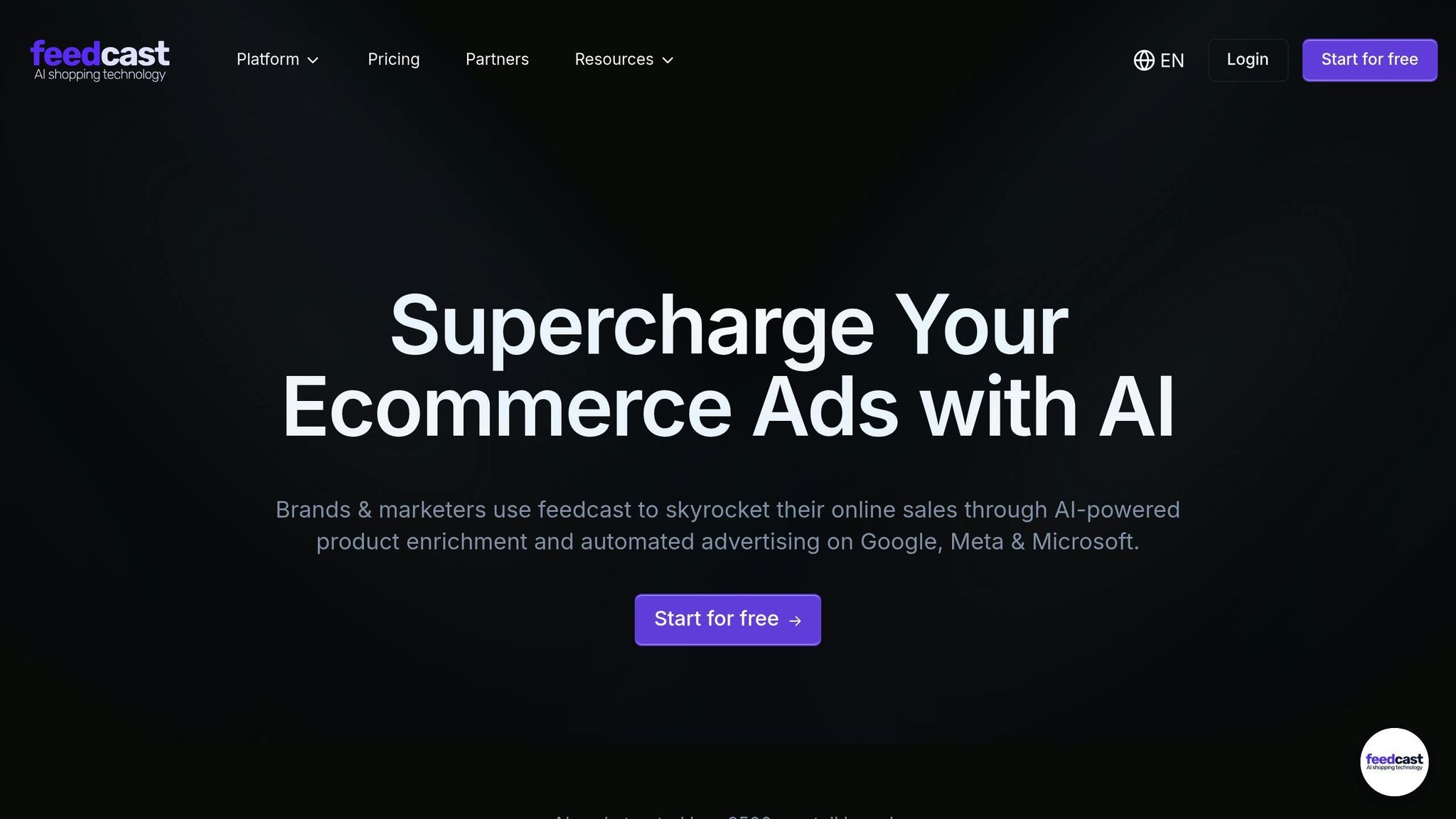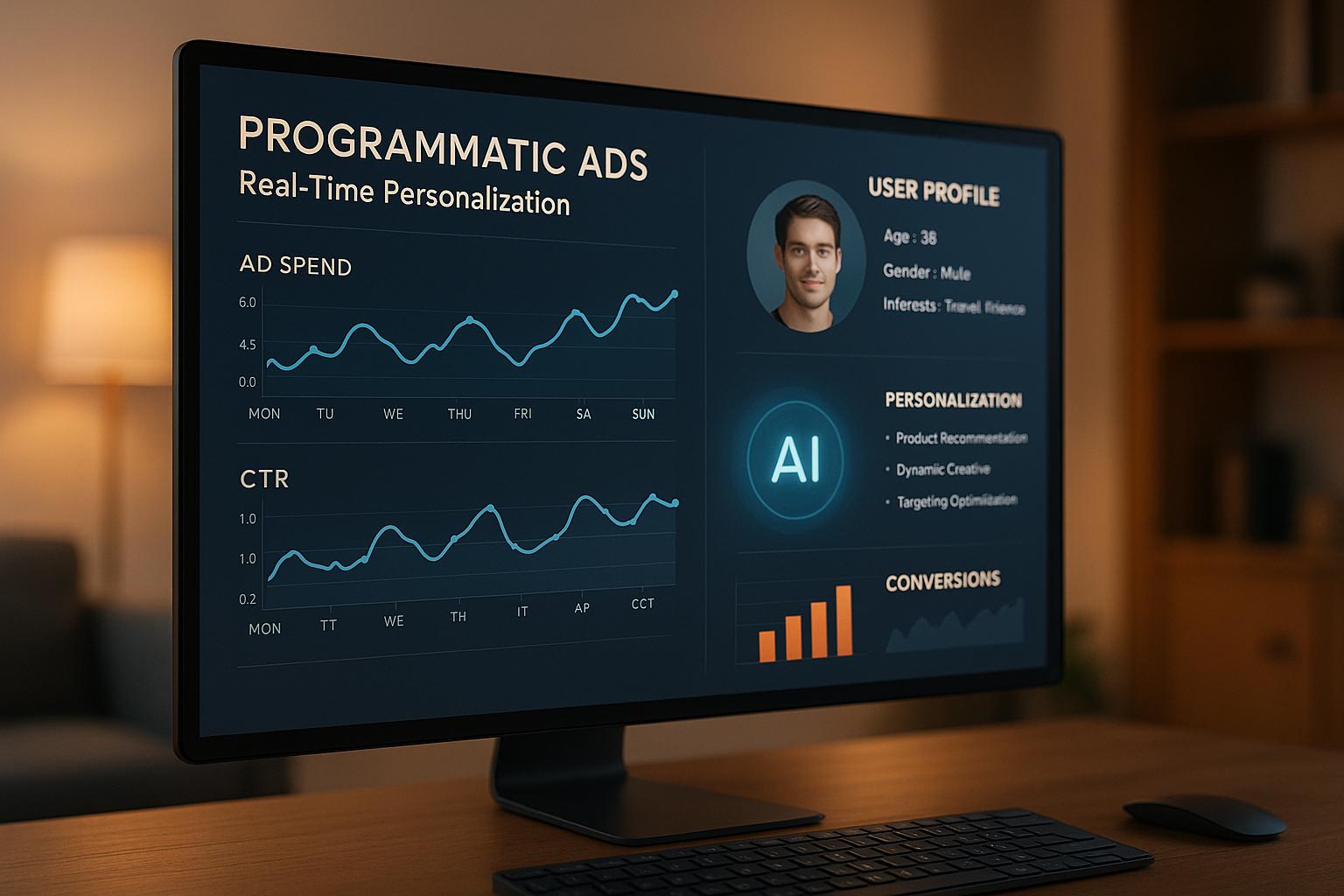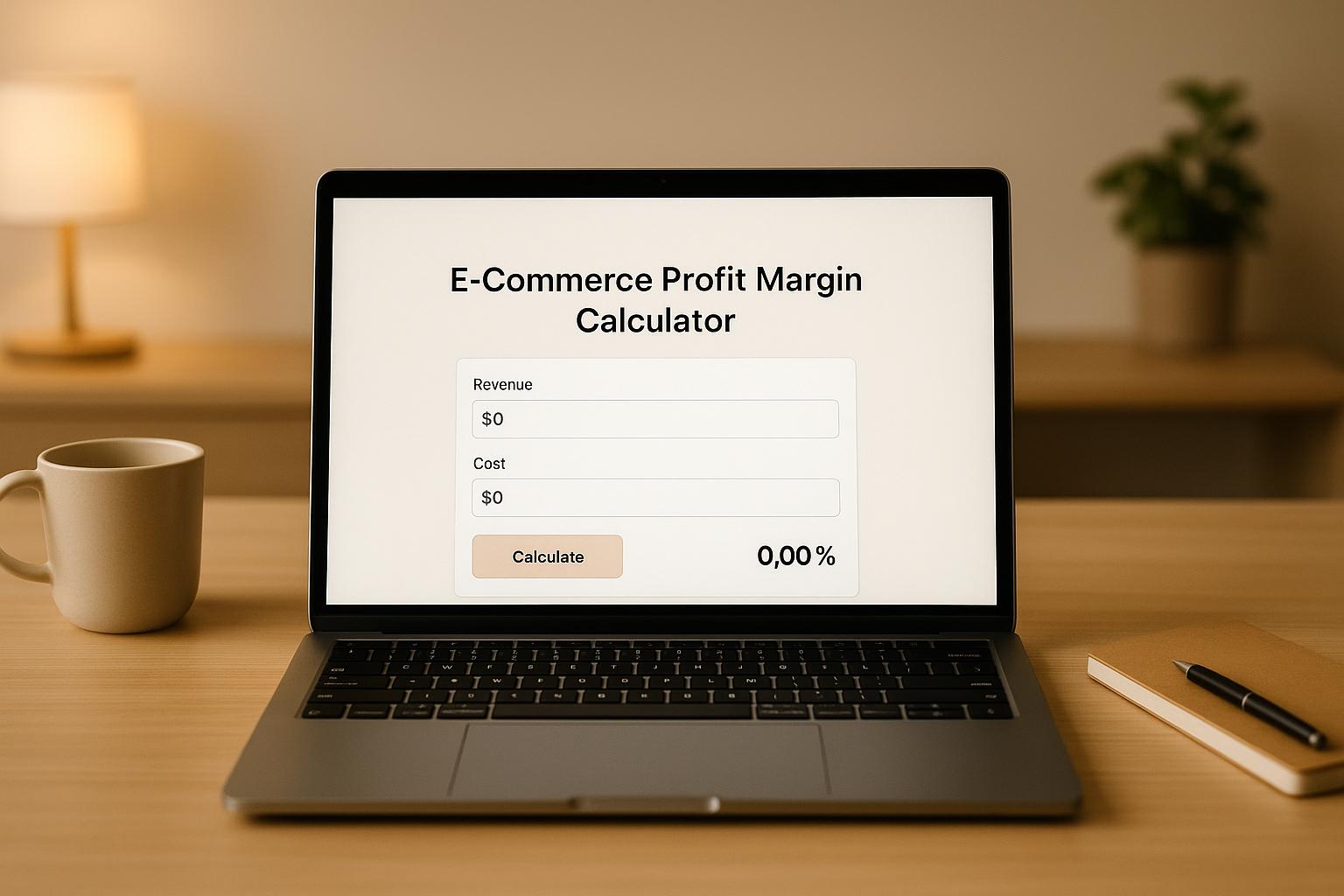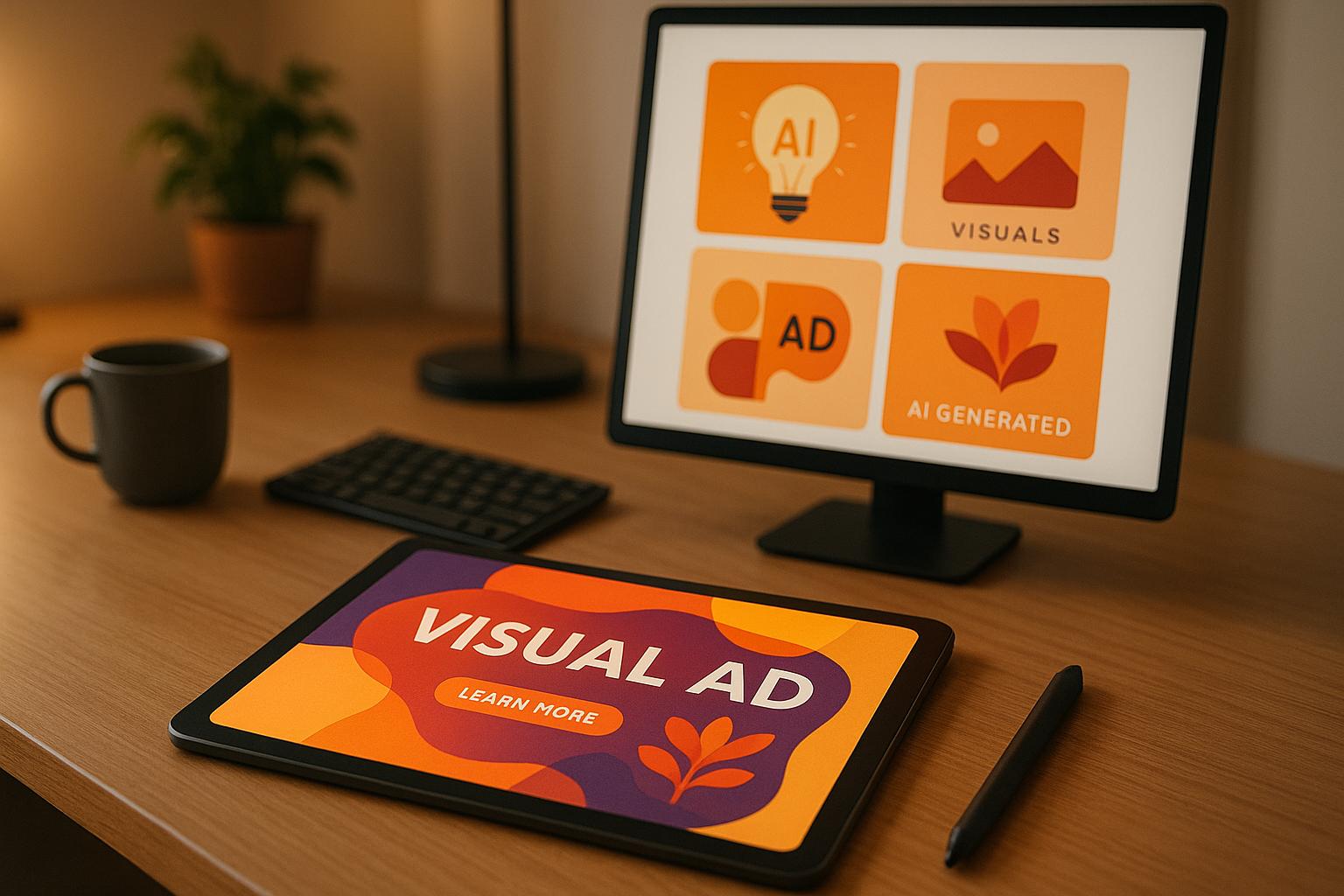How AI Predicts Customer Behavior for Better Ads
AI is transforming advertising by using data to predict customer behavior with precision. Instead of relying on broad strategies, businesses now leverage AI to create ads that feel personal and relevant. Here's what you need to know:
- AI uses predictive analytics to analyze customer data (like browsing history and purchase records) and forecast actions, improving ad efficiency by up to 30%.
- Traditional marketing struggles with generic messaging and slow adjustments, while AI enables real-time optimization and hyper-targeted campaigns.
- Techniques like segmentation, personalization, and propensity modeling allow businesses to deliver tailored messages, boosting engagement and sales.
- Companies using AI report higher conversion rates (up to 35%) and reduced costs for acquiring leads.
AI-driven platforms, like Feedcast, simplify ad management by integrating multiple channels, automating ad creation, and providing real-time performance insights. This ensures smarter spending, better customer retention, and measurable results.
The future of advertising lies in combining AI's predictive power with human oversight to deliver ads that truly connect with customers.
How to predict customer behavior without a data science team
How AI Predicts Customer Behavior
AI transforms raw data into actionable insights by uncovering patterns that are beyond human detection. Using advanced algorithms, it processes multiple data streams simultaneously, crafting detailed behavioral profiles that predict future customer actions with precision. This predictive ability is the backbone of how AI uses diverse data to model customer behavior.
Data Sources for Prediction Models
AI taps into a wide range of data types - everything from historical CRM records and e-commerce data to unstructured sources like social media posts, images, and videos [5][2]. These inputs help build rich customer profiles, incorporating details like purchase history, browsing habits, marketing engagement, and interactions with customer support.
Take Amazon, for example. 35% of its revenue comes from AI-driven personalized product recommendations [4]. This demonstrates how well-processed data can directly translate into business success.
AI systems don't just analyze past behavior - they work in real time. They update predictions as fresh data comes in, allowing for dynamic customer experiences. A simple morning browsing session can influence the ads a customer sees later that day [2].
The secret to accurate predictions lies in collecting high-quality data from a variety of sources. This includes website analytics, CRM tools, email engagement metrics, and social media interactions [5]. For instance, AI can detect potential churn by analyzing a drop in website visits or email engagement. Similarly, it can identify purchase intent by tracking product views, cart activity, and past purchases [5].
Main Methods: Segmentation, Personalization, and Propensity Modeling
Once data is collected, AI uses techniques like segmentation, personalization, and propensity modeling to refine its insights.
Segmentation: AI identifies behavior-based subgroups, allowing businesses to deliver highly tailored messages [6]. This goes beyond traditional demographic segmentation by focusing on behavioral patterns and predicting future actions.
Personalization: AI creates marketing messages that resonate on a deeper level [6]. It examines individual preferences, past interactions, and habits to recommend the right products or messages at the ideal time.
Propensity Modeling: This method predicts the likelihood of specific actions, such as making a purchase, abandoning a cart, or canceling a subscription [6]. It helps businesses proactively address customer needs and allocate marketing budgets more effectively.
77% of marketing ROI stems from segmented, targeted, and triggered campaigns [6], while 80% of companies using segmentation report increased sales [6]. Businesses leveraging AI-powered segmentation often see a 10% boost in customer engagement and a 5% increase in sales [8].
Real-world examples showcase these methods in action. The North Face uses IBM Watson's AI to create personalized customer segments, achieving a 75% conversion rate among engaged customers [4]. Similarly, Overstock.com customizes email marketing by tailoring recommendations, content, and send times based on user behavior [4].
In India, a telecom provider partnered with Xerago to reduce customer churn. By analyzing six months of historical data, Xerago built a churn prediction model that identified at-risk customers. Targeted retention strategies led to a 25% reduction in churn and a 40% rise in customer satisfaction [7].
Why Continuous Learning Matters
AI's ability to continuously learn ensures it adapts to changing customer behaviors, trends, and market dynamics. This adaptability complements strategies like segmentation and personalization, keeping predictive models relevant.
Customer preferences are always evolving. What worked last quarter might be outdated today. AI systems that learn continuously can spot these shifts in real time, adjusting predictions and refining targeting strategies without manual intervention.
For example, a Malaysian bank partnered with Xerago to enhance its analytics capabilities. By restructuring its Adobe Analytics framework and integrating SAS Event Stream Processing, the bank achieved real-time customer segmentation. Unified customer profiles allowed for dynamic segmentation based on on-site behavior, location, and demographics. This approach led to a 35% increase in engagement rates and a 43% improvement in application conversion rates [7].
Continuous learning also sharpens predictions like Customer Lifetime Value (CLV). By analyzing metrics like purchase frequency, order value, and retention rates, AI makes increasingly accurate forecasts as more data becomes available [5]. This helps businesses make smarter decisions about customer acquisition and retention strategies.
To stay effective, AI systems require constant monitoring and updates as new data emerges [5]. This ensures they remain aligned with changing market conditions and customer behavior.
"Your job will not be taken by AI. It will be taken by a person who knows how to use AI." - Christina Inge, Instructor at the Harvard Division of Continuing Education's Professional & Executive Development [2]
This quote underscores the value of mastering AI's capabilities, emphasizing that it's a tool to enhance human insight, not replace it.
Using AI for Better Ad Targeting
Leverage AI-driven predictive analytics by focusing on key steps: preparing your data, building smart audience segments, and fine-tuning campaigns in real time. These strategies complement earlier discussions on using data to segment audiences and the importance of continuous learning.
Preparing and Collecting Data
The success of AI-powered ad targeting starts with high-quality data. According to a 2018 McKinsey report, marketing stands out as the area where AI delivers the most value [9]. To get started, tap into data sources like CRM systems, website analytics, and email performance metrics. Customer information - such as demographics, purchase history, browsing habits, device preferences, and geographic location - forms the backbone of AI algorithms that detect patterns and predict future behaviors [3].
CRM platforms are great for tracking transactional data, while website analytics and email metrics can reveal browsing habits and content interests. To ensure effective targeting, it’s essential to clean and organize your data while adhering to privacy laws like GDPR and CCPA. This not only improves targeting accuracy but also builds user trust by protecting their information [3].
Building Dynamic Audience Groups
Once your data is in order, you can use AI to create dynamic audience segments. AI excels at sifting through massive datasets to uncover audience preferences and behaviors [3]. Before diving into segmentation, set clear goals for your campaigns [3]. AI tools can then group users based on behavior, creating segments that predict future actions. These dynamic groups are continuously updated as new data flows in, keeping your targeting relevant and aligned with shifting customer behaviors.
Improving Campaigns with Predictive Data
After setting up dynamic segmentation, take it a step further with predictive analytics to fine-tune your campaigns. Predictive tools analyze large datasets and make real-time adjustments, helping you refine your ads as new data comes in [3]. This allows you to forecast customer behavior and deliver timely, tailored ads. For instance, if the system identifies that a particular segment is likely to abandon their shopping cart, you can instantly trigger retargeting ads with personalized offers to encourage them to complete their purchase.
Keep a close eye on campaign performance and use real-time insights to make immediate adjustments. Every interaction helps refine predictions, ensuring your campaigns stay sharp and effective.
sbb-itb-0bd1697
Benefits of AI-Powered Predictive Analytics
AI-powered predictive analytics takes data-driven advertising to the next level, improving personalization, boosting ROI, and increasing customer retention.
Better Personalization and Customer Engagement
AI delivers the personalized experiences that today’s customers expect. By analyzing customer data, it identifies preferences and predicts future actions, helping businesses understand what their customers want, who they are, and when they’re ready to act [10].
Here’s the reality: companies that lead in personalization see 40% higher revenue compared to those that don’t [14]. Meanwhile, 71% of consumers expect personalized interactions, and 76% feel frustrated when they don’t get them [14]. Personalization isn’t just a perk anymore - it’s a demand.
AI also enables real-time, meaningful interactions between businesses and their customers, which drives engagement and builds trust [10]. By anticipating needs and offering relevant information instantly, AI saves time and creates a seamless experience. When customers feel understood, they’re more likely to stick around and make purchases.
Take Sephora, for example. The beauty retailer uses AI to craft personalized beauty recommendations based on factors like skin type, past purchases, and individual beauty goals. Their AI tools even analyze selfies to suggest makeup shades and power virtual try-ons [12]. This approach not only enhances customer engagement but also ensures smarter ad spending and better retention strategies.
Higher Marketing ROI and Ad Efficiency
AI-powered predictive analytics helps businesses get more out of their marketing dollars by cutting down on wasted ad spend and focusing on the right audiences. It tracks decision-making timelines and conversion patterns, allowing advertisers to adjust their strategies to stay effective throughout the customer journey [1].
Here’s a key stat: 75% of customers are willing to spend more with a brand that delivers a great experience [11]. AI makes this possible by analyzing user data to create tailored content, promotions, and offers that feel relevant and timely [10]. When ads resonate with customers, they respond - and that response often translates into sales.
What’s more, AI gets smarter over time. Its algorithms learn from each customer interaction, continuously refining strategies to improve outcomes [10].
Nike is a prime example of this in action. The company uses data from its app, website, and in-store interactions to create unified customer profiles. These profiles allow Nike to offer personalized product recommendations, targeted promotions, and exclusive content that speaks to individual preferences [14].
By analyzing patterns and behaviors, AI also sharpens audience segmentation for more precise targeting [10]. Instead of wasting resources on broad campaigns, businesses can focus their efforts on customers who are most likely to convert. This not only maximizes ad efficiency but also strengthens customer loyalty.
Early Retention Strategies
One of AI’s standout strengths is its ability to identify customers at risk of leaving. By analyzing past behaviors, AI helps businesses proactively address concerns and recommend tailored solutions, reducing churn before it happens [10].
Predictive analytics picks up on warning signs like reduced engagement, fewer purchases, or shifts in browsing habits. With this insight, businesses can launch targeted retention campaigns - whether it’s a personalized offer, exclusive content, or direct outreach - to re-engage customers who might otherwise walk away.
52% of customers expect offers to be customized [10], and AI ensures you meet those expectations. If a customer shows signs of losing interest, you can step in with messaging that speaks to their specific needs.
"A satisfied customer is the best business strategy of all." - Michael LeBoeuf [13]
Using Feedcast for AI-Driven Advertising Success

E-commerce businesses looking to harness the power of AI-driven predictive analytics need a platform that simplifies the complexities of modern advertising while delivering measurable outcomes. Feedcast does just that by blending AI-powered insights with practical tools for managing campaigns across major advertising platforms.
Unified Multi-Channel Advertising Management
Running campaigns across platforms like Google, Meta (Facebook and Instagram), and Microsoft Ads often requires juggling multiple dashboards. Feedcast eliminates this hassle by connecting all your ad accounts into a single, unified dashboard[1]. This setup allows for instant cross-channel adjustments and consolidated reporting, making it easier to see which touchpoints are driving conversions. For businesses scaling their ad efforts, this centralized approach supports simultaneous campaign launches and ensures consistent brand messaging without adding extra manual work. Plus, the integration paves the way for automated ad creation and real-time campaign fine-tuning.
AI-Powered Ad Creation and Data Enhancement
Creating ads tailored to specific platforms can be time-consuming. Feedcast simplifies this by automating ad copy creation and improving product data to enhance listing relevance. Its AI capabilities resolve feed errors and refine product listings, ensuring better visibility across all advertising channels. By automating these tasks, campaigns run smoothly, avoiding common issues that could make ads ineligible. Businesses leveraging AI for ad targeting have reported a 20–25% boost in marketing ROI, thanks to improved audience segmentation and campaign performance[15][17].
Real-Time Performance Analytics and Optimization
Feedcast provides real-time insights through its analytics dashboard, which consolidates performance data from all connected ad platforms. This allows businesses to make quick, data-driven decisions. With performance segmentation, you can dive into metrics by product category, audience group, or individual campaign to identify top performers and cut wasted ad spend. The platform also offers automated bid adjustments, smart audience targeting, and actionable recommendations based on predictive analytics. This continuous optimization is especially useful for retention strategies, as Feedcast’s smart targeting identifies customers at risk of leaving and enables personalized retargeting campaigns to win them back[15][16].
Conclusion: The Future of Advertising with AI
AI-powered predictive analytics is transforming e-commerce advertising by replacing guesswork with precision. With the AI market projected to surpass $757 billion in 2025 and climb to $3.68 trillion by 2030 [19], businesses that fail to embrace this shift risk falling behind.
AI has moved beyond basic automation, enabling real-time adjustments that traditional methods could never achieve. It delivers tailored messages to the right audience at the perfect time - something that older marketing strategies, which relied on broad demographic trends and intuition, simply couldn't match [2].
What’s even more exciting is how AI tools are becoming more accessible. Small and medium-sized businesses now have the chance to leverage predictive analytics, a capability once reserved for large corporations with deep pockets [1]. Companies like Feedcast are proving that even smaller businesses can use AI-powered solutions to achieve measurable results.
The next step isn’t just about adopting AI - it’s about building meaningful value on top of these platforms. As Generative AI is expected to create 90% of all online content and investments in the field are set to exceed $2 billion [20], businesses must focus on transparency and ethical practices to truly connect with their audiences.
"Predictive analytics is not just about numbers - it's about understanding people. What motivates them, when they're likely to buy, and what keeps them loyal. And when used ethically, it's a win‑win for both brands and customers."
- Celine, Master's thesis researcher at Munich Business School [18]
The future belongs to companies that strike a balance between AI and human insight. To stay ahead, businesses must invest in AI, train their marketing teams, and combine automation with human oversight. These strategies lay the groundwork for the next era of advertising innovation.
FAQs
How does AI improve customer behavior predictions compared to traditional marketing methods?
AI improves the ability to predict customer behavior by processing massive amounts of data from sources like social media, search history, and online shopping patterns. Traditional marketing often depends on smaller datasets and manual research, but AI leverages machine learning algorithms to detect patterns and trends as they happen.
This means businesses can develop highly personalized marketing strategies tailored to individual customers, boosting engagement and increasing conversion rates. With AI, companies can make faster, data-backed decisions, fine-tuning their advertising campaigns for greater effectiveness.
What types of data does AI use to improve ad targeting, and how does it make ads more accurate?
AI taps into a wide range of data sources to refine ad targeting. These include audience engagement metrics, demographics, browsing habits, social media interactions, and purchase history. By processing these data points in real time, AI uncovers patterns and predicts customer behavior with impressive accuracy.
This capability enables AI to craft ads that feel tailored to individual preferences, making them more relevant and engaging. The outcome? Ads that connect with the right people at the perfect moment, driving higher engagement and better conversion rates.
How can businesses use AI ethically in advertising to build trust and engage customers?
To ensure ethical use of AI in advertising, businesses should prioritize transparency, data privacy, and fair practices. Make it clear how AI is applied in campaigns, safeguard customer data with robust security measures, and steer clear of biased algorithms that might mislead or negatively impact users.
By committing to responsible AI practices - like protecting user privacy and making ethical choices - companies can build trust and loyalty. These actions not only improve customer engagement but also help create stronger, lasting connections with their audience.
Geoffrey G.




